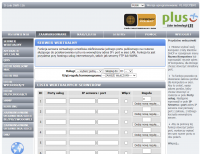FAQ
TL;DR: Stop changing IPs after reboots with a 2‑step static‑IP setup: "set the upper range of dhcp addresses." This FAQ is for Arduino/Raspberry Pi users whose router resets change device IPs. You’ll lock the IP or find it by MAC when needed. [Elektroda, ex-or, post #19242151]
Why it matters: Stable LAN IPs prevent broken connections, failed scripts, and time‑wasting device hunts.
Quick Facts
- D-Link DWR-116 UI may lack a DHCP reservation tab; users reported “dhcp – no such tab exists.” [Elektroda, klon111, post #19241833]
- Quick fix: cap DHCP at .200 and set the Pi to static .201 to avoid conflicts. [Elektroda, ex-or, post #19242151]
- Outcome: After setting a static IP in OSMC on Raspberry Pi, the address stayed stable. [Elektroda, klon111, post #19242484]
- To find IP by MAC: ping a.b.c.255 to refresh ARP, then run arp -a. [Elektroda, JacekCz, post #19260780]
- Arduino Ethernet example hardcodes 10.0.0.177; match your router’s subnet or it won’t work. [Elektroda, khoam, post #19241734]
How do I find a device’s IP if I only know its MAC?
Use ARP from a machine on the same LAN. First, generate traffic to the subnet’s broadcast (e.g., ping a.b.c.255). Then list the ARP table with arp -a and match the known MAC to its IP. Note that ARP may not show inactive hosts until you “wake” them with traffic. This is the fastest no‑router‑login method on Windows and similar on other OSes. [Elektroda, JacekCz, post #19260780]
Why does my device’s IP change after every router restart?
Your device likely uses DHCP. After a router reboot, the DHCP server can hand out a different address. Fix it by configuring a static IP on the device. That keeps the address constant across reboots and power cycles. This is preferred for servers and controllers. [Elektroda, cysiekw, post #19241684]
What’s the quickest way to keep my Raspberry Pi’s IP stable?
Limit the DHCP pool and set a static IP just beyond it. How‑To: 1. In the router, set the DHCP upper range to .200. 2. On the Raspberry Pi, set a static IP like .201. 3. Reboot the Pi and router to apply changes. This avoids lease changes and conflicts. [Elektroda, ex-or, post #19242151]
Does the D-Link DWR-116 support DHCP reservations by MAC?
A user reported the UI lacked a DHCP reservation tab on the DWR‑116. If you can’t find reservations, use device‑level static IP and adjust the DHCP pool to avoid collisions. That achieves the same outcome: a stable LAN address for your device. [Elektroda, klon111, post #19241833]
The Arduino EthernetGatewayIP example can’t find my gateway—what should I change?
The example sketch hardcodes 10.0.0.177. If your router’s subnet differs, the Arduino won’t communicate. Change the sketch’s static IP to match your LAN’s subnet, or use DHCP temporarily to discover settings. Matching subnets is essential for routing to work. [Elektroda, khoam, post #19241734]
Where should I assign a static IP to avoid conflicts?
Pick an address outside or at the end of the router’s DHCP pool. For example, if the pool ends at .200, use .201 for the device. This prevents the DHCP server from leasing the same address to another host. [Elektroda, karwo, post #19241703]
I don’t see reservations—where else should I look in my router?
Open Advanced network settings and search for terms like “Static DHCP,” “Address Reservation,” or “DHCP binding.” Some UIs hide this under advanced or LAN pages. If it’s missing, use a device‑side static IP instead. [Elektroda, cysiekw, post #19241780]
What Windows command maps MAC addresses to IPs quickly?
Run arp -a in a Command Prompt. If entries look stale or empty, first ping the subnet broadcast (a.b.c.255) to refresh the ARP cache. Then rerun arp -a and match the MAC to its IP. [Elektroda, JacekCz, post #19260780]
How do I determine the correct subnet for my Arduino/RPi network?
Check the router’s IP as seen by your Raspberry Pi. Make your Arduino’s static IP fall within that subnet, including matching the netmask and gateway. Mismatched subnets break communication and gateway discovery. [Elektroda, khoam, post #19241734]
Will setting a fixed server IP really keep it stable across reboots?
Yes. As one expert put it, “you will always have the same IP.” Assign a static IP on the server and keep it outside the DHCP pool. This prevents the DHCP server from changing it on reboot. [Elektroda, karwo, post #19241739]
Is there an official D-Link guide for static IP assignment?
See D-Link’s FAQ for model DWR‑921 on assigning a static IP to connected devices. While the UI differs by model, the principles—reserving or statically assigning addresses—are similar across D-Link routers. [D-Link FAQ: Static IP on DWR-921]
What finally worked for the original poster (OSMC on Raspberry Pi)?
They set a static IP within OSMC for the Raspberry Pi. After doing so, the device kept a stable address and the issue was resolved. This confirms the static‑IP approach is effective with that setup. [Elektroda, klon111, post #19242484]







